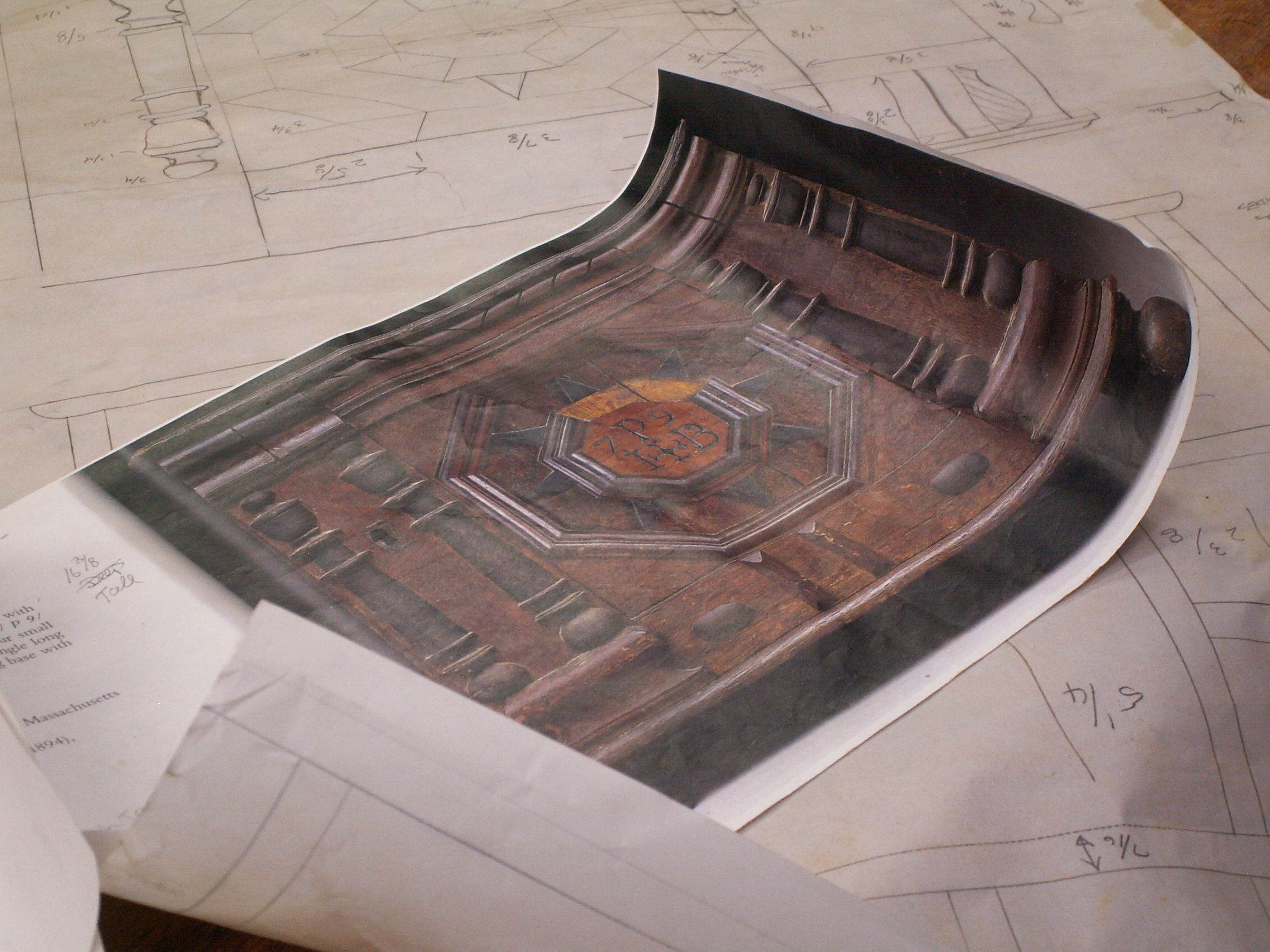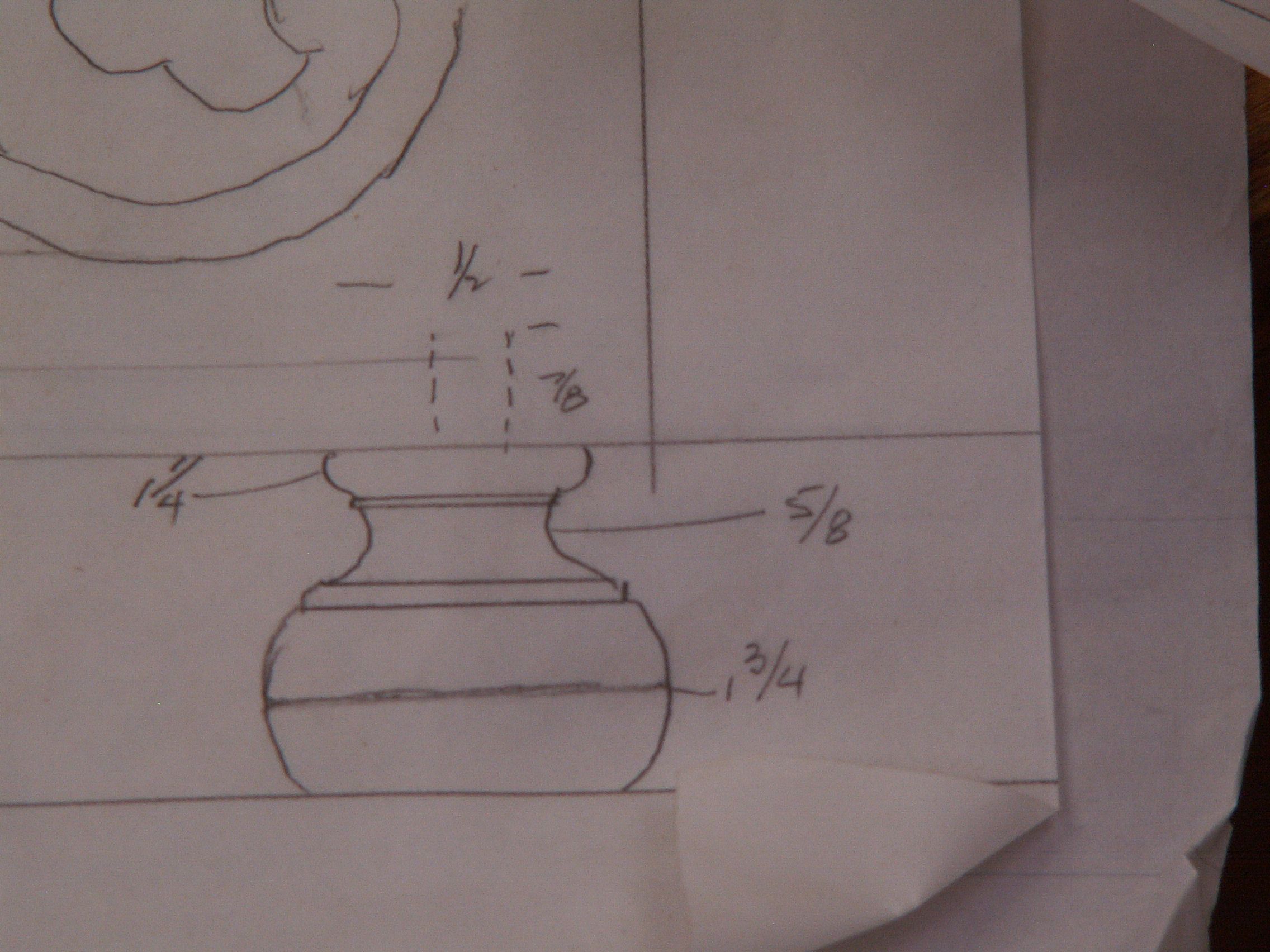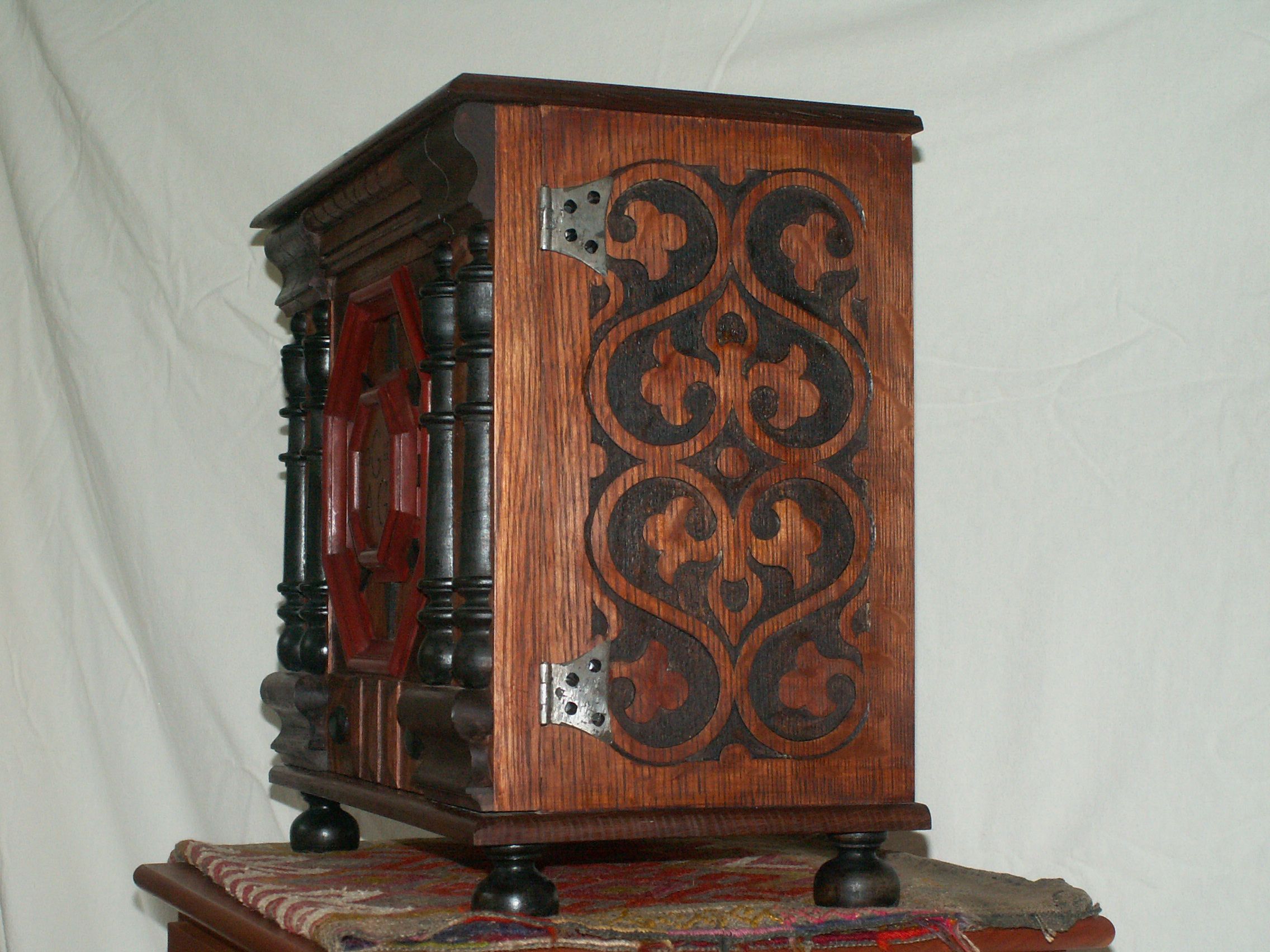Pope Cabinet Replica
by Gary Green 2010
This extraordinary cabinet is part of a group of joined furniture made in the Salem, Massachusetts, shop of John and James Symonds during the last quarter of the 17th century. Made primarily of quarter sawn oak, it might have incorporated maple, red cedar and walnut in its decorative moldings and split turnings.
The cabinet featured on this page is a replica by Gary Green.
About the Pope Cabinet
The original Pope Cabinet was made in 1679 by James Symonds (1633-1714). It recently sold at auction for 2.4 million dollars.
“The valuables box owned by Joseph and Bathsheba Pope of Salem Village (now Danvers, Massachusetts) was decorated in the height of 17th-century fashion. Christie’s, aware of its importance, published a separate catalog for this single item, a practice reserved for special consignments, such as the John Brown secretary, Edwards-Harrison family Philadelphia furniture, and the Hollingsworth suite. In addition to genealogy, the catalog featured a thoughtful essay about its style, which is Mannerist with geometric and Classical ornament. Its sides are deeply carved with S-scrolls laid out with a compass and finished freehand.
It is related to five other New England valuables chests. Three of them were illustrated in color for comparison. Two of the chests—the one made for Thomas Hart now at Winterthur and the one made for Ephriam and May Herrick now at the Metropolitan Museum of Art—exhibit nearly identical ornaments, interior arrangement, and construction. They undoubtedly came from the same shop as the Pope cabinet.
The Popes were of the first generation of settlers born in America. They joined the Society of Friends (Quakers) and thus were persecuted while continuing to live in the Puritan theocracy of Massachusetts. They became involved in a witchcraft trial in Salem as accusers. Moreover, they were related by marriage to the Harts, the Herricks, and the Southwick-Buffingtons, who owned similar chests. Bathsheba Pope was Benjamin Franklin’s aunt.
The chest was probably made in the Symonds cabinetmaking shops. An essay by Robert Trent in Christie’s catalog charts the joinery tradition in Salem, initially researched and first identified by the late Benno Forman for his Winterthur master’s thesis in 1968. Trent, summing up and expanding past research published in several books and periodicals, writes that John Symonds came to Salem in 1636 from Great Yarmouth, Norfolk, England, the port for the great weaving center of Norwich. Trent points out one of the great monuments from Symonds hometown is the paneling from the Star Hotel in the Mannerist tradition, now installed in the Metropolitan Museum of Art.” — Maine Antique Digest




